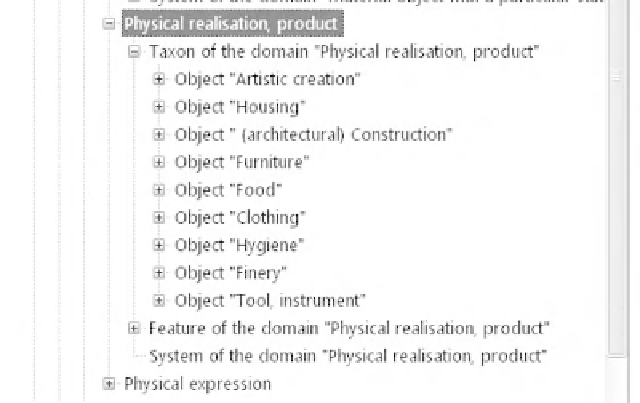Information Technology Reference
In-Depth Information
- the taxonomic domain of
materialobjects-livingorotherwise-whichoccupy
a particular position
in the lifeworld of an actor (see Figure 13.5, the branch
beginning with the term [Material object with a particular status]). It is as much a
question of physical persons and populations (human or otherwise) as of animals
(pets, working animals, etc.) or all sorts of objects and collections of objects
documenting a past or enabling that past to be reconstructed. The conceptual
vocabulary making up that specialized branch thus brings together all the conceptual
terms which enable us to analyze material objects (or sets of objects) that have a
value for archaeology, prehistory or paleontology. In addition we find there all the
conceptual terms which refer to physical objects with specific cultural value
(historical, memorial, etc.), notably including monuments and documents in the
sense of a material
piece
of information, historical or otherwise in nature;
Figure13.7.
Thetaxonomicdomainofartifactsrepresentedbythe
conceptualterm[Creation/product]
- the taxonomic domain of
artifacts
, i.e. creations and products such as works of
art, buildings and dwellings, food, clothes, etc. This domain begins with the
conceptual term [Physical creation, product]. Given its importance in the analysis of
audiovisual corpora which deal with objects that form part of daily practices (living,
eating, dressing, healing, introducing, etc.), this domain is completely deployed
using a canonic triplet: [Taxon of the domain “Physical creation, product”], [Feature
of the domain “Physical creation, product”] and finally [System of the domain
“Physical creation, product”]. The taxonomic domain in question is broken down
into more specialized, more circumscribed taxonomic domains, such as food,
housing, clothing or construction (see Figure 13.7). In turn, each of these specialized

